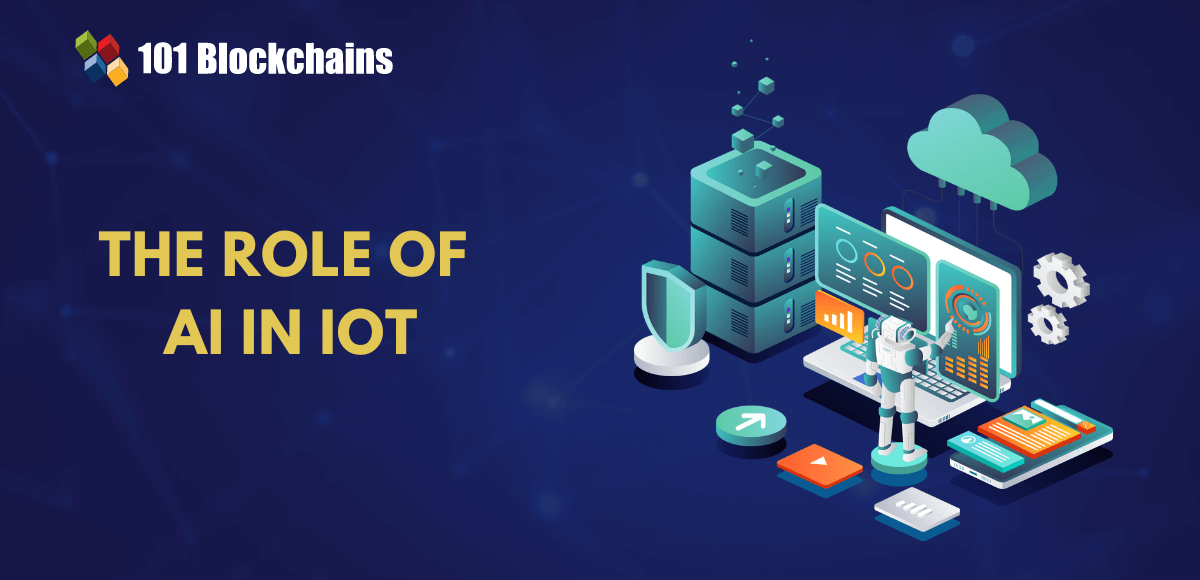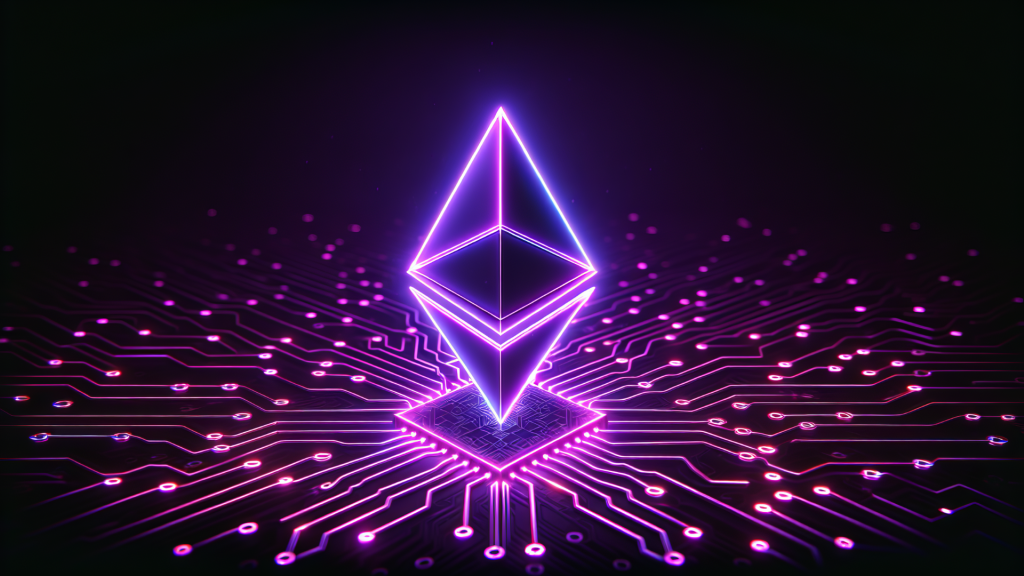What is the role of AI in IoT?

The terms AI and IoT are omnipresent and have emerged as the most prominent highlights of future technologies. Companies need to understand the role of AI in IoT to create new business opportunities across industries. For example, the combination of artificial intelligence and IoT can improve customer experience, drive growth, and increase the productivity of business operations. Statista pointed out that the AI market could grow by about 40% by June 2024.
On the other hand, the IoT market is expected to see more than 16 billion new connections by 2024. AI and IoT can create a smart future where machines do not just follow instructions. You may think of a future robot utopia that will grow based on artificial intelligence and the Internet of Things. Learn more about the importance of AI in IoT through examples.

What is the importance of AI in IoT?
Before you can discover the hidden potential of combining AI and IoT, you need to know about both technologies. By understanding the potential of each component in the combination, we can better understand the application of AI in IoT.
Artificial intelligence refers to the simulation of human intelligence in machines so that humans can learn, reason, and perform tasks autonomously. AI uses a variety of technologies, including machine learning, NLP, computer vision, and deep learning, to process large data sets, recognize patterns, make predictions, and take action based on valuable insights.
On the other hand, the Internet of Things (IoT) is a network where devices are connected to each other. Devices have software, connectivity features, and sensors that help collect and transmit data, enabling communication between the device and the real world. The importance of artificial intelligence in IoT mainly revolves around the diversity of IoT applications. IoT applications in healthcare, smart home, agriculture, industrial automation, and transportation have demonstrated how artificial intelligence can take IoT applications to the next level.
As the number of IoT devices increases, so do new possibilities for generating more data. With over 29 billion IoT connections expected by 2030, artificial intelligence can play a huge role in enhancing IoT networks. IoT networks can collect and manage large amounts of data that can serve as input for AI algorithms. AI algorithms can then use data from IoT devices to provide actionable insights.
Do you want to understand the basics of the Internet of Things (IoT)? Enroll in the IoT Basics Course now!
How can artificial intelligence work in IoT?
The Internet of Things and artificial intelligence are transforming each other based on their unique strengths. The combination of AI and IoT provides useful insights for companies looking to use AI to enhance their existing IoT applications. Find the answer to the question “What is the use of AI in IoT?” It is illustrated with reference to examples such as Nokia’s production site in Finland. Production facility leverages intelligent automation and digital twins to increase productivity and reduce time to market.
The combination of AI and IoT can introduce unique capabilities in the form of AIoT, or artificial intelligence of things. AI can replicate human intelligence in machines, and IoT serves as a powerful connected infrastructure for information exchange. Therefore, the combination of the two technologies helps in effective analysis and interpretation of data rather than simply collecting and communicating it. Additionally, the interaction of AI and IoT can also improve IoT operations, data analytics, and user interaction.
An overview of individual IoT and AI cases provides a snapshot of what can be achieved independently. However, AI can add value to IoT by leveraging new capabilities for decision-making and machine learning. IoT, on the other hand, can enhance AI through data exchange, connectivity, and signaling. Here are the steps that can explain how AI works in IoT:
- IoT devices such as cameras, industrial machines, sensors, and wearables continuously collect data and transmit it to cloud platforms or centralized servers.
- In the next step, AI algorithms analyze data collected from IoT devices to help identify patterns, anomalies, and correlations.
- Our discussion of the future of IoT and AI highlights how combining the two technologies can lead to comprehensive data analytics. AIoT systems can use insights extracted from data analytics to provide valuable recommendations that can enhance autonomous decision-making.
- As a result, AIoT systems can take many different types of actions in response to insights gained from data analysis. AIoT systems can also use continuous learning mechanisms to improve their performance over time.

What are the benefits of using AI in IoT?
Find a better answer to “What is the use of AI in IoT?” Explore the benefits of combining the two technologies. Companies see opportunities to combine AI and IoT for benefits such as enhanced customer engagement, operational efficiency, and revenue growth. We outline the most notable benefits of combining AI and IoT.
The combination of AI and IoT supports real-time analysis of data generated and collected from IoT devices. AI’s role in IoT can be clearly seen by looking at how artificial intelligence enables real-time data analysis. Instant processing of sensor data by AI systems can provide faster responses and access to insights. Real-time data analytics can ensure better productivity and efficiency in a variety of areas, including predictive maintenance, supply chain optimization, and quality control.
-
Better security and risk management
IoT networks can leverage the power of AI to achieve promising improvements in security and risk management. For example, AI can help detect unusual activity and malicious patterns and trigger responses to breaches. Various IoT and AI examples show that AI systems can detect intrusions using data obtained from cameras and real-time analysis.
AI in IoT can also improve privacy by leveraging secure communication protocols and data encryption. Stronger authentication mechanisms that combine AI and IoT ensure that authenticated users only have access to sensitive information.
-
Personalization of user experience
The promise of an IoT and AI future expands upon new opportunities to personalize user experiences. AIoT can help achieve contextual applications based on user preferences and behavior.
For example, an AI system can learn a homeowner’s preferred temperature and lighting levels from IoT devices. As a result, it can automatically adjust temperature and lighting depending on the time of day. Intelligent systems also provide personalized recommendations through comprehensive data analysis to achieve better customer satisfaction.
-
Resource optimization and automation
Artificial intelligence can also help effectively optimize resource management in IoT networks in a variety of ways. Applying AI to IoT can also optimize power consumption by adjusting lighting and heating systems based on occupancy in a smart home.
For industry, artificial intelligence in IoT networks can enhance predictive protection for machines and systems. AI can also be applied to industrial IoT to streamline business operations by automating routine tasks. For example, the use of AIoT in warehouses can facilitate automated inventory management and order fulfillment.
Understand the real potential of AI and best practices for using AI tools with our AI For Business course.
What are the potential applications of IoT and AI in the future?
The combination of AI and IoT brings unique surprises to everyone, including the general public and industry around the world. However, the influence of artificial intelligence in IoT can also be perceived as a trend that will soon disappear. Therefore, it is important to identify areas where AI and IoT can provide significant benefits to users and businesses.
The interaction of AI and IoT can enhance smart cities, environmental monitoring, agriculture, and education. For example, the integration of AI and IoT can create smart cities that promise enhanced functionality. Smart cities can use AI and IoT for energy-efficient buildings, improved public facilities, and intelligent transportation management.
Nest Labs is a representative example of combining AI and IoT. The company has designed a smart thermostat to provide better convenience to users. Smart thermostats leverage IoT to effectively monitor temperature and related controls utilizing smartphone integration.
Another notable example that shows the path to a better IoT and AI future is that of Tesla and self-driving cars. With the power of AI and IoT, all Tesla self-driving cars operate like a connected network. As a result, information learned from a single Tesla vehicle can help predict traffic levels and pedestrian behavior in a variety of scenarios.
Unleash the full potential of generative AI in your business use cases and identify new ways to become an expert in generative AI technologies with the Generative AI Technology Path.
final words
The use of AI in IoT can open new opportunities for technological growth. As AI emerges as a powerful tool for automation and extracting valuable insights, it can power IoT networks. The answer to ‘What is the use of AI in IoT?’ Here’s how artificial intelligence can change the game for IoT. Interestingly, proven AIoT use cases across a variety of industries show that companies can achieve promising benefits by combining both technologies. Learn more about AI and IoT and best practices for using them together today.




